Installation and configuration of the qBittorrent OPKG package
qBittorrent is a BitTorrent client written in C++ for Linux, Windows, macOS, OS/2 and BSD operating systems. It is based on the Qt toolkit and libtorrent-rasterbar library. It supports all modern BitTorrent extensions and is one of the most powerful tools for working with BitTorrent files.
Let's explore the option of installing the qBittorrent torrent client from the Entware repository.
Important
The qBittorrent torrent client is recommended for use on high-performance models, particularly Titan, Hero, and Hopper.
For the qBittorrent client to work stably, you need to mount a disc partition with an automatically mounted SWAP partition as a swap file area.
First, you need to prepare an external USB drive and install the Entware repository package system on it. The instructions detail how to do this Installing the Entware repository on a USB drive.
Install the qbittorrent package:
/ #
opkg install qbittorrentInstalling qbittorrent (4.1.9.1-1) to root... Downloading http://bin.entware.net/mipselsf-k3.4/qbittorrent_4.1.9.1-1_mipsel-3.4.ipk Installing libatomic (8.3.0-9) to root... Downloading http://bin.entware.net/mipselsf-k3.4/libatomic_8.3.0-9_mipsel-3.4.ipk Installing qt5-core (5.14.0-1) to root... Downloading http://bin.entware.net/mipselsf-k3.4/qt5-core_5.14.0-1_mipsel-3.4.ipk Installing qt5-network (5.14.0-1) to root... Downloading http://bin.entware.net/mipselsf-k3.4/qt5-network_5.14.0-1_mipsel-3.4.ipk Installing qt5-xml (5.14.0-1) to root... Downloading http://bin.entware.net/mipselsf-k3.4/qt5-xml_5.14.0-1_mipsel-3.4.ipk Installing boost-system (1.72.0-1) to root... Downloading http://bin.entware.net/mipselsf-k3.4/boost-system_1.72.0-1_mipsel-3.4.ipk Installing boost-chrono (1.72.0-1) to root... Downloading http://bin.entware.net/mipselsf-k3.4/boost-chrono_1.72.0-1_mipsel-3.4.ipk Installing boost-python3 (1.72.0-1) to root... Downloading http://bin.entware.net/mipselsf-k3.4/boost-python3_1.72.0-1_mipsel-3.4.ipk Installing boost-random (1.72.0-1) to root... Downloading http://bin.entware.net/mipselsf-k3.4/boost-random_1.72.0-1_mipsel-3.4.ipk Installing libopenssl (1.1.1d-2) to root... Downloading http://bin.entware.net/mipselsf-k3.4/libopenssl_1.1.1d-2_mipsel-3.4.ipk Installing rblibtorrent (1.1.14-1) to root... Downloading http://bin.entware.net/mipselsf-k3.4/rblibtorrent_1.1.14-1_mipsel-3.4.ipk Configuring boost-system. Configuring boost-chrono. Configuring libatomic. Configuring qt5-core. Configuring qt5-xml. Configuring boost-python3. Configuring boost-random. Configuring libopenssl. Configuring rblibtorrent. Configuring qt5-network. Configuring qbittorrent.This step must only be performed the first time you connect to the qBittorrent web interface.
Warning
The default settings do not contain an administrator password for accessing the torrent client web interface. When logging in for the first time, you must get a temporary password, authenticate with it, and then set your permanent password in the web interface settings.
You can get the current temporary password through the qBittorrent console.
Stop qBittorrent if it was previously running. To do this, run the command:
/ #
/opt/etc/init.d/S89qbittorrent stopThen execute the command:
/ #
qbittorrent-nox --webui-port=9080 --profile=/opt/etc --configuration=entwarePress
yto continue.After that, a message about the temporary launch of the torrent client's WebUI and information about
usernameandtemporary passwordof the administrator account will appear.WebUI will be started shortly after internal preparations. Please wait... ******** Information ******** To control qBittorrent, access the WebUI at: http://localhost:9080 The WebUI administrator username is: admin The WebUI administrator password was not set. A temporary password is provided for this session: mST5tN7mk You should set your own password in program preferences.
In our example, the
usernameisadmin, and thetemporary passwordismST5tN7mk.Warning
Do not close the process (session) in the console after executing the command
qbittorrent-nox --webui-port=9080 --profile=/opt/etc --configuration=entwareOpen the qBittorrent web interface in your browser at
http://router_ip_address:9080(in our example, it is 192.168.1.1:9080), enteradminin the Username field and the temporary password in the Password field.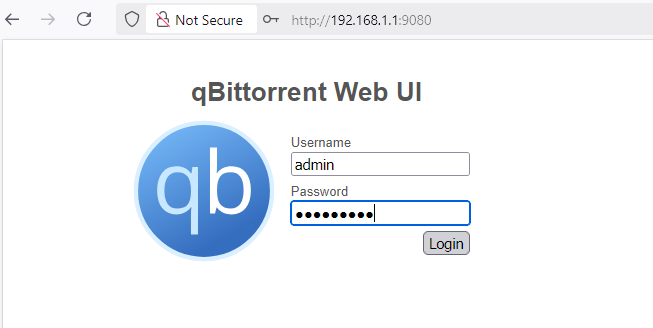
On successful authentication, you will see the torrent client's built-in web interface.
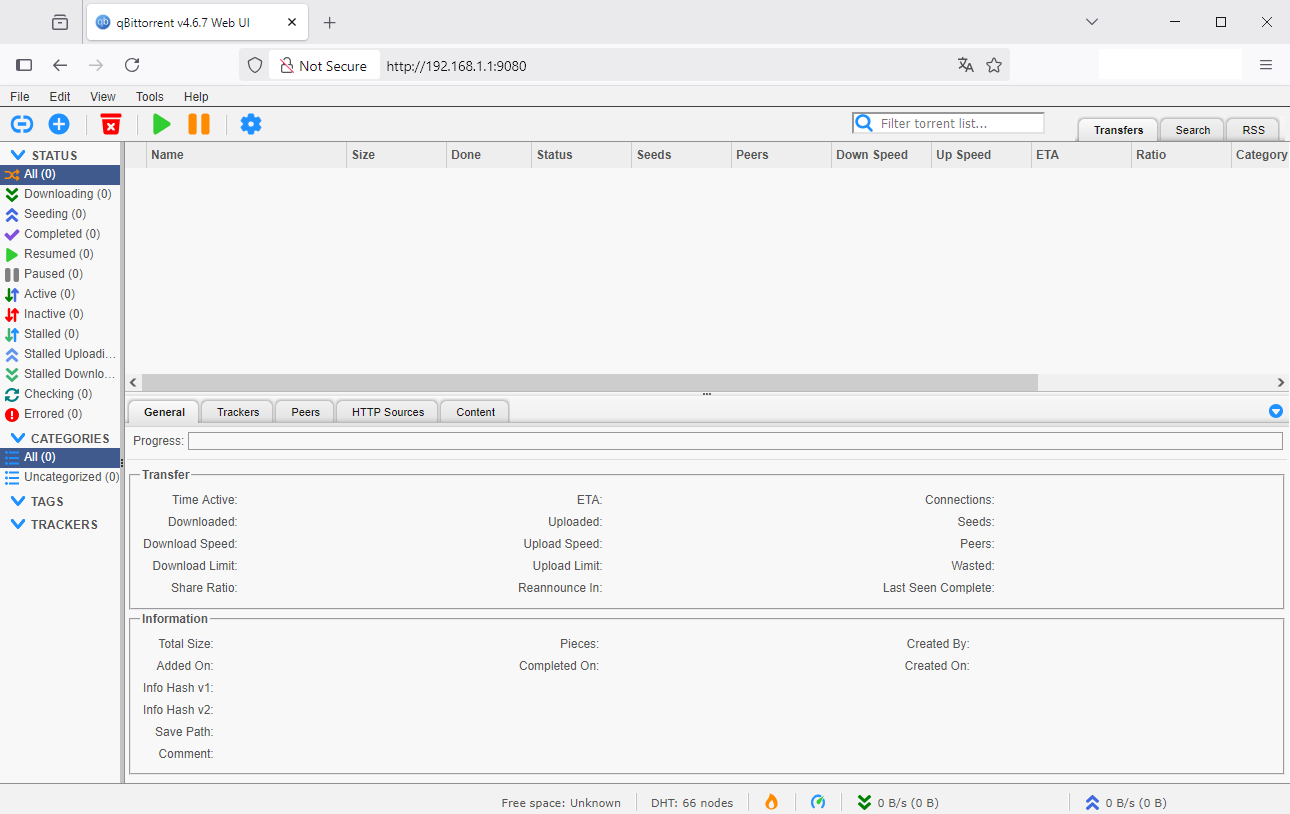
Click the
 (Options) button to go to the torrent client settings.
(Options) button to go to the torrent client settings.On the Web UI tab in the Authentication section, in the Password field, set your permanent password for the
adminaccount. To save the settings, click the Save button at the bottom of the window.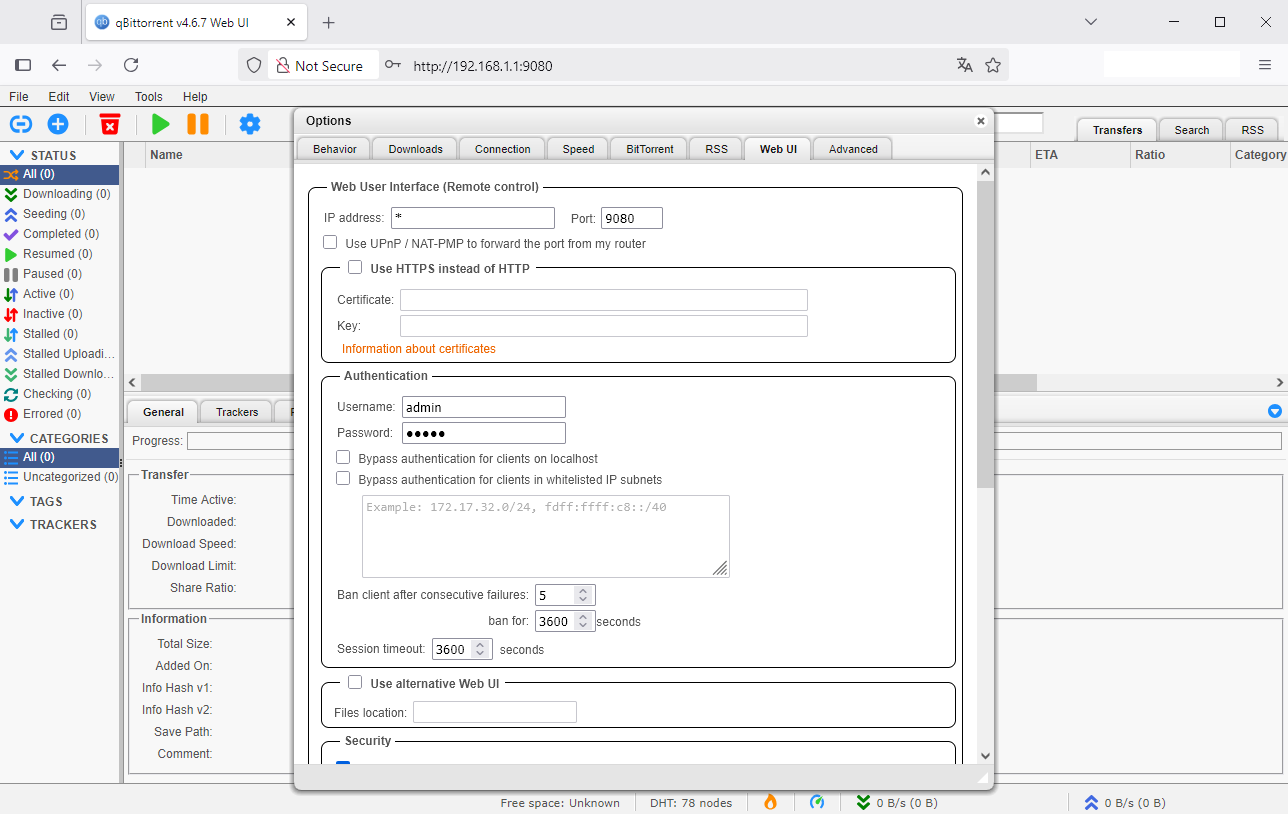
Now return to the console window where we got the temporary password for authentication. Terminate the session by pressing
Ctrl + C.Start qbittorrent with the command:
/ #
/opt/etc/init.d/S89qbittorrent startStarting qbittorrent-nox... done.Go to the web interface of the torrent client at
http://router_ip_address:9080(in our example, it is 192.168.1.1:9080, enteradminin the Username field and the temporary password in the Password field.In qBittorrent, make the necessary settings and check that the torrent client is functioning.
In the Options window, on the Behaviour tab, in the User Interface Language field, you can change the interface language; for example, set it to German.
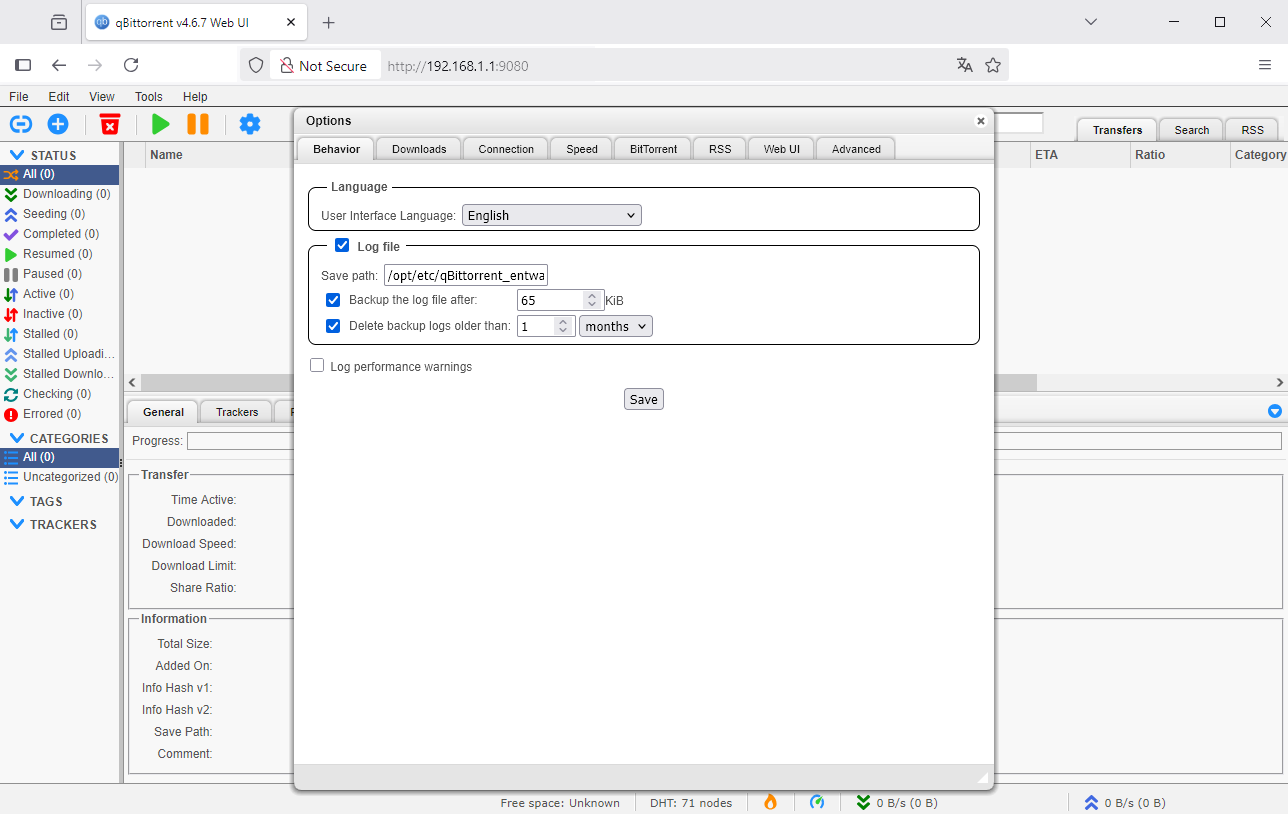
Important
For stable operation of the system and the qBittorrent torrent client, it is recommended to limit the torrent file upload/download speed. You can do it in the settings on the Speed tab.
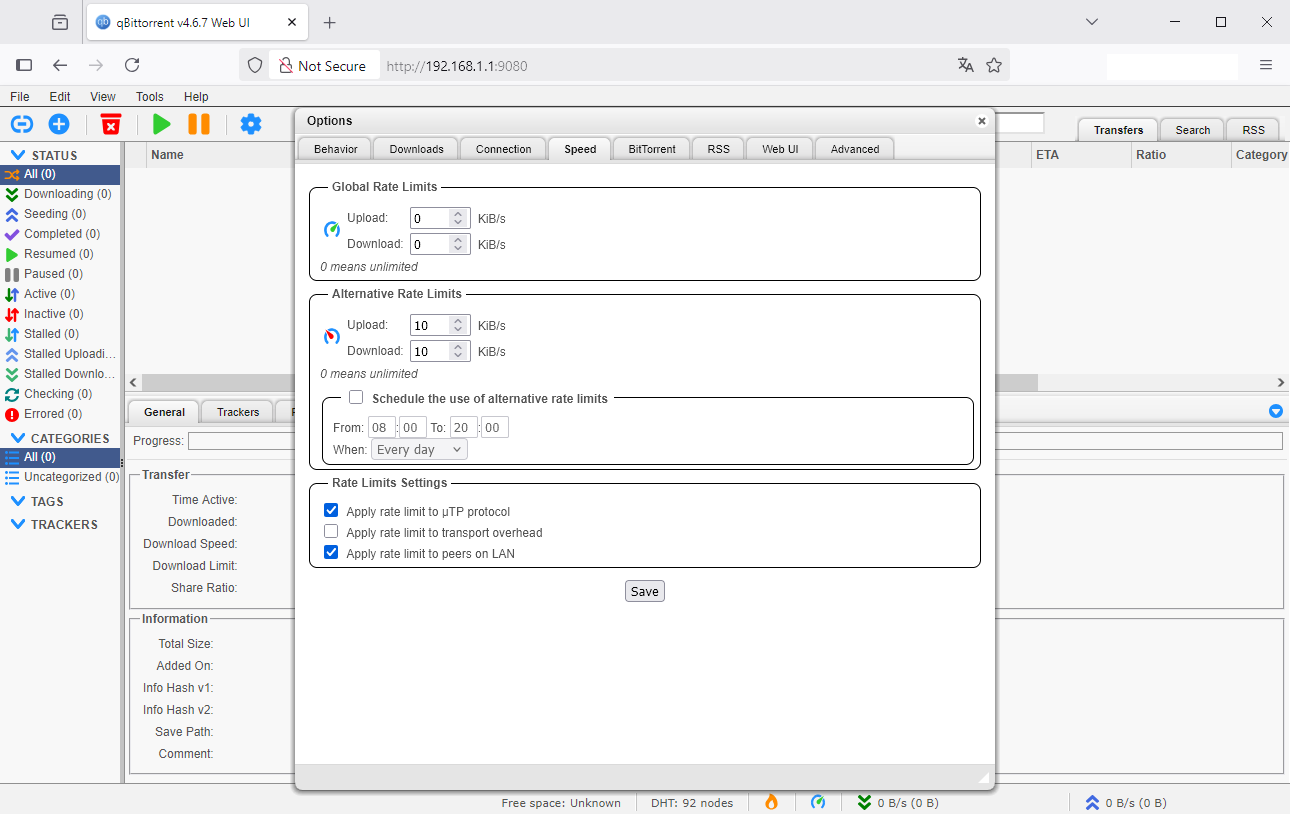
That's it, you can start downloading.
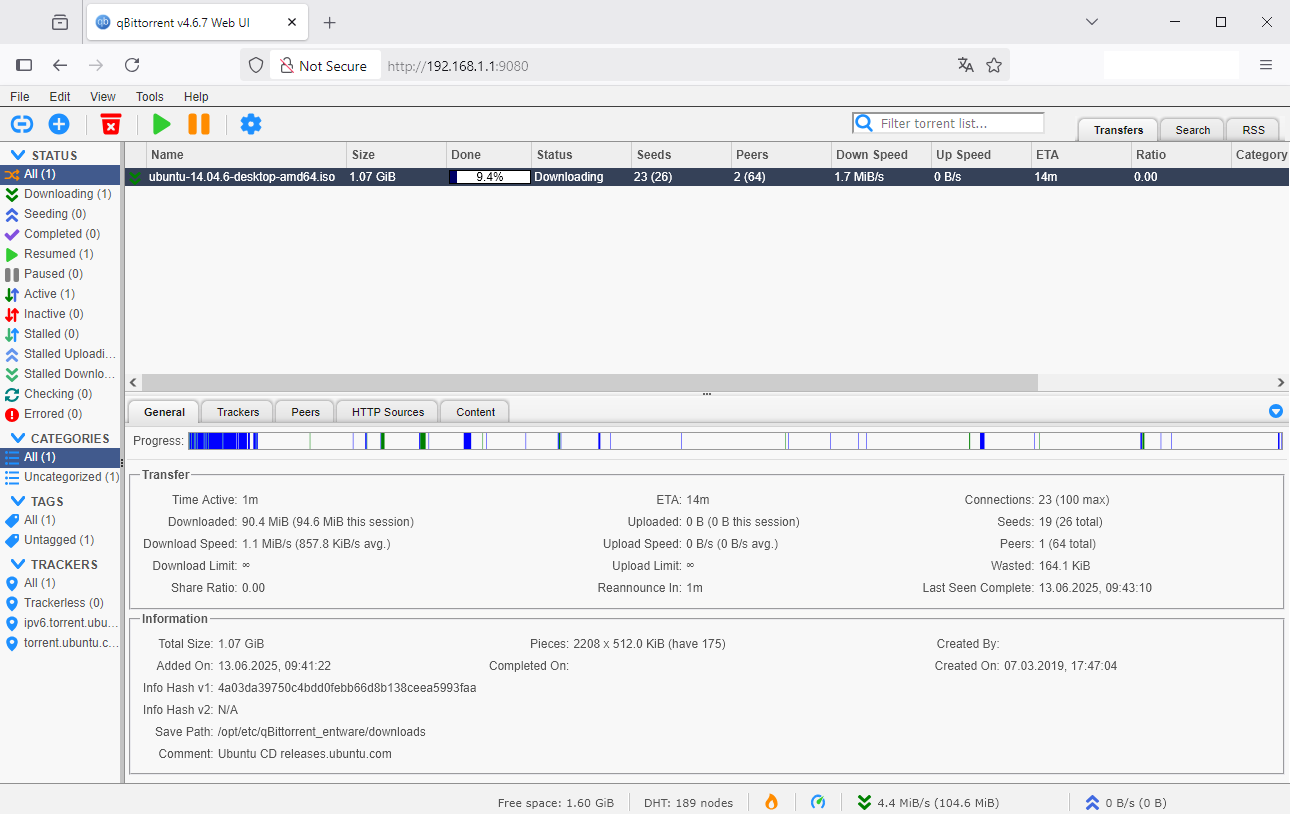
If necessary, you can change the management port number of the torrent client web interface. The default port number is
9080. You can change it on the Web UI tab.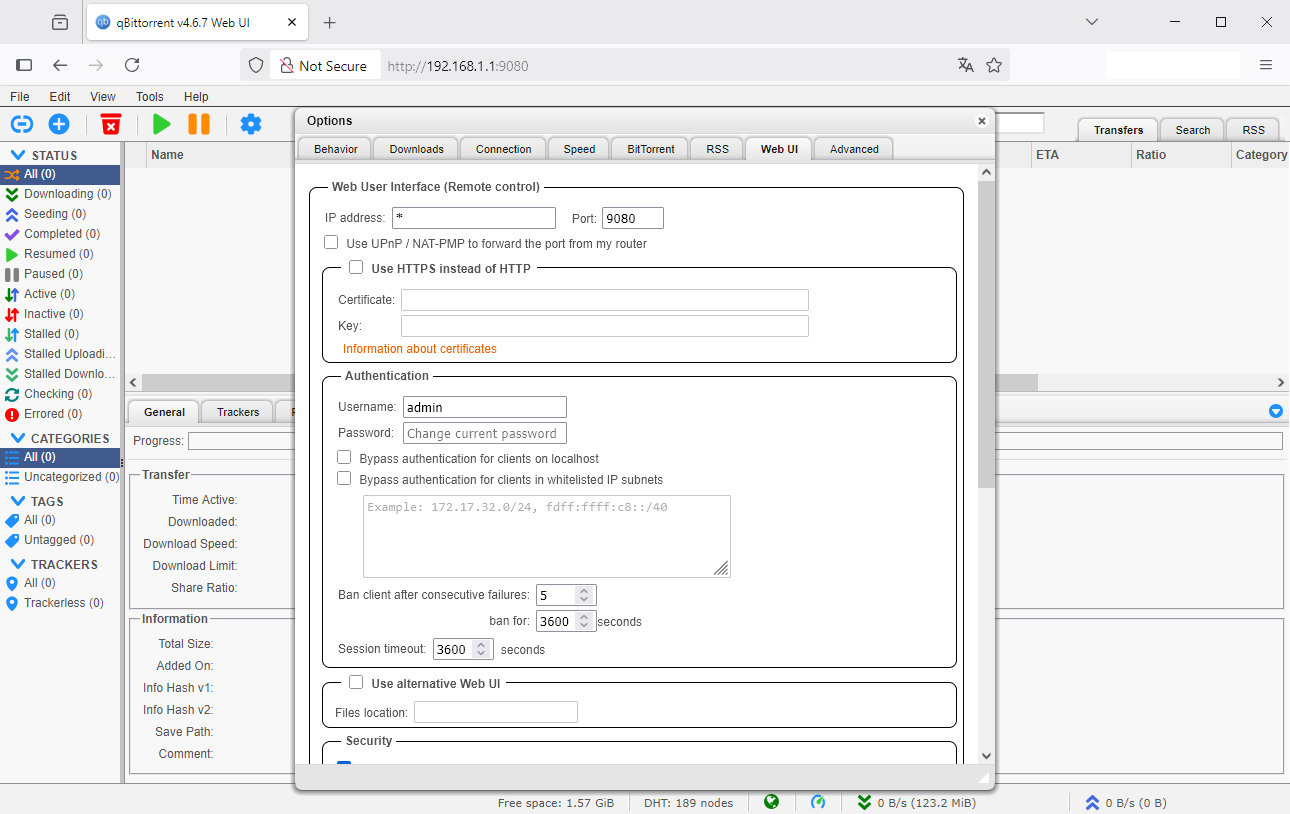
Please note that after restarting the torrent client with the command
/opt/etc/init.d/S89qbittorrent restart, the port number setting returns to the preset default value.
Important
Support for the package is available on the developers' forum — qBittorrent.